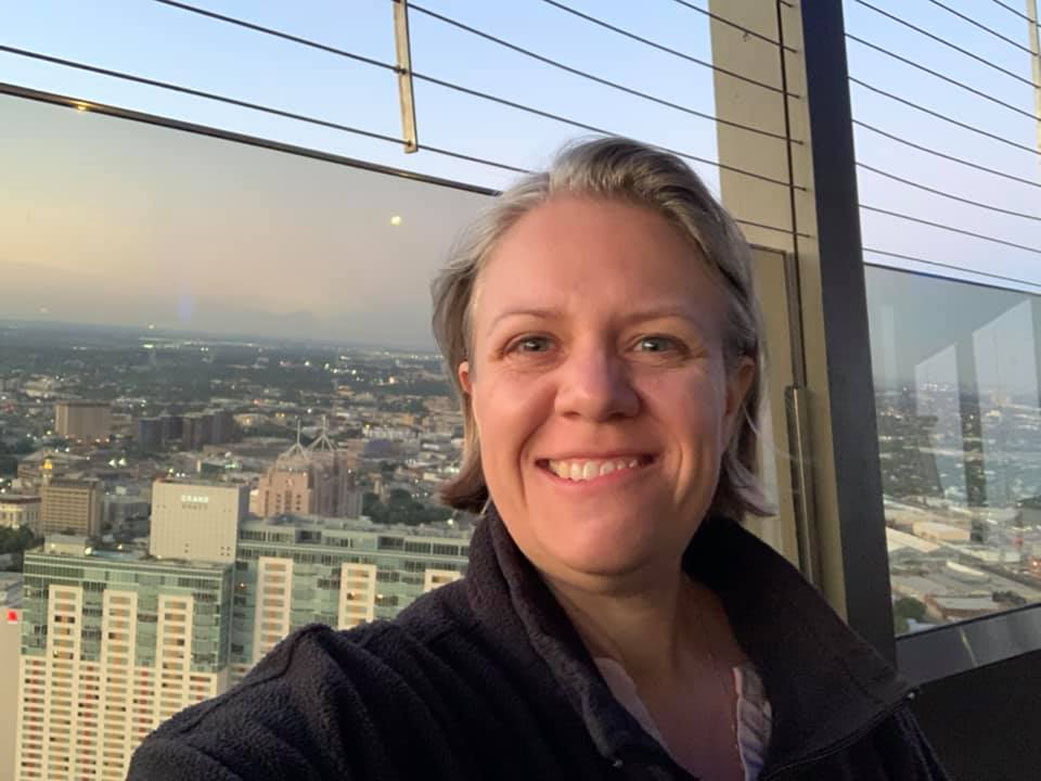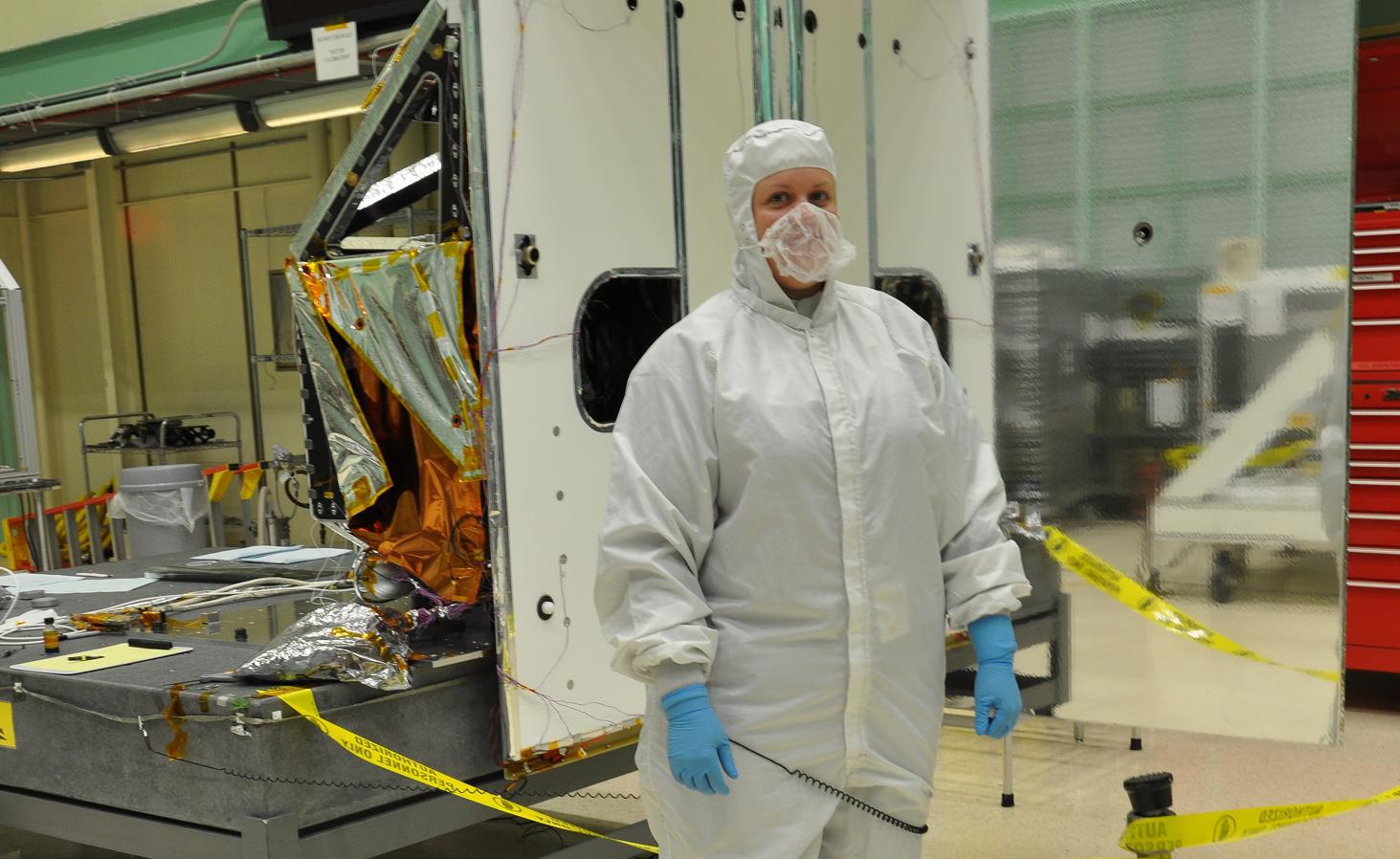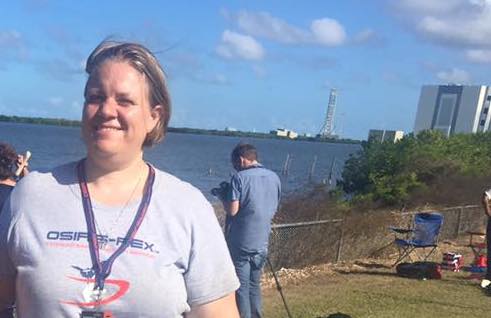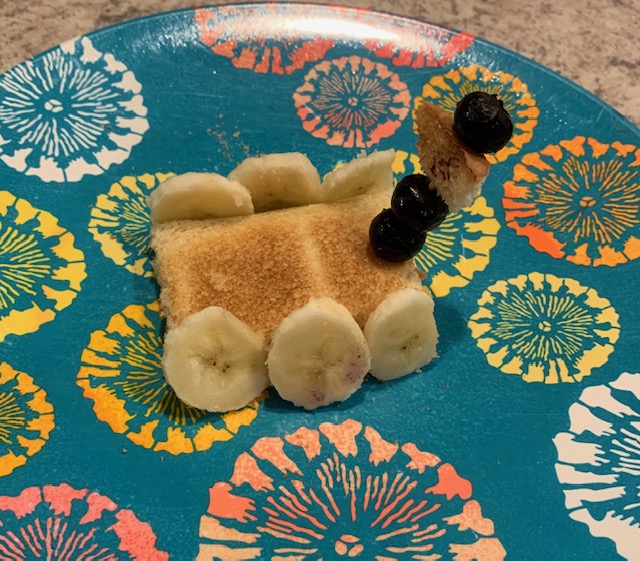Name: Liz Matson
Title: Deputy Instrument Systems Engineer for L’Ralph
Formal Job Classification: Aerospace Engineer
Organization: Code 599, Mission Systems Engineering Branch, Engineering and Technology Directorate
What do you do and what is most interesting about your role here at Goddard? How do you help support Goddard’s mission?
As the deputy instrument systems engineer for L’Ralph, I am responsible for planning the comprehensive performance test for the instrument to make sure it does what we designed it to do and that it will do the required science in orbit. L’Ralph is an infrared imager and panchromatic spectrometer for the Lucy mission. Lucy is going to do a flyby of the Trojan asteroids, which share an orbit with Jupiter. Lucy is scheduled to launch in October 2021. The science data taken during the flybys will hopefully give the science community new information about how our solar system was formed.
Why did you become an engineer?
I was always really good at math and science. My high school physics teacher really encouraged me to become an engineer. I got a Bachelor of Science in Mechanical Engineering from Case Western Reserve University in Cleveland and a master’s in aerospace engineering from the University of Maryland, College Park.
How did you come to Goddard and what makes you stay?
While in college in 2001, I applied for internships at all 10 NASA centers and accepted the offer from Goddard, where I have worked ever since.
Every day is interesting. We solve really hard problems. Each instrument we build has its own unique set of challenges, so my job is never boring.
What different mechanical engineering positions have you held at Goddard?
My initial 10-week internship was with the Mechanical Engineering Branch, Code 543. I worked in the Composites Lab.
I then returned through the co-op program to the Mechanical Systems Analysis and Simulation Branch, Code 542, where I stayed after receiving my undergraduate degree. I did structural analysis and vibration testing for about 15 years. We’d spend a year or more planning for a test, and the test would be 60 seconds of sheer terror, shaking what everyone spent years designing and building. I’d hold my breath those entire 60 seconds. When a test was successful, I could then finally breathe again.
During that time, I became the lead structural analyst for the Thermal Infrared Sensor (TIRS), an instrument aboard Landsat 8, leading a team of nine other structural analysts. After that, I became the lead structural analyst for the OSIRIS-REx Visible and Infrared Spectrometer (OVIRS), an instrument aboard OSIRIS-REx (Origins, Spectral Interpretation, Resource Identification, Security, Regolith Explorer). For both instruments, we did years of analysis to make sure that the design would survive launch and perform as expected in the in-orbit thermal environment. After the instruments were built, we conducted vibration and acoustics testing at Goddard. I also traveled to support observatory-level vibration and acoustic testing once an instrument was installed aboard a spacecraft.
Why did you decide to become a systems engineer?
My favorite part of the lead analyst job was leading an effort called Structural Thermal Optical Performance (STOP) analysis. It is an interdisciplinary analysis that requires a lot of coordination among the thermal, mechanical and structural teams. I really liked the interdisciplinary work and wanted to do it on a bigger scale. I really enjoy seeing the big picture and how everything comes together.
Systems engineering is very much like putting together a large puzzle. As a systems engineer, my job is to make sure that all the pieces fit together and in the right place.
How did Goddard’s Systems Engineering Educational Development (SEED) Program help you become a systems engineer?
SEED is a two-year, in-house training program for discipline engineers who want to become systems engineers. SEED offers a mix of training courses and rotational assignments on flight projects that provide a structured framework for technical and leadership training. SEED allows engineers to work on different projects at different phases of the life cycle so participants learn about systems engineering through the life cycle of different missions. I also enjoyed the mentoring and coaching support, as well as a cohort to learn from and collaborate with.
I just graduated from SEED in May 2020.
How did you become part of L’Ralph?
My last rotation with SEED was on L’Ralph’s systems engineering team. After graduation, I became the deputy instrument systems engineer.
What comprehensive performance tests are you managing for L’Ralph?
We are testing a series of commands to the instrument to exercise all of our subsystems to make sure that everything is performing how we intended. We sit at a laptop and send commands directly to the instrument while it’s in the clean room.
Comprehensive performance tests are very stressful. We run them before and after our environmental testing. The entire test takes six hours, and we run it many times throughout the testing campaign. In the next four months, we may run this six-hour test 20 times, including during the middle of the night.
What do you hope to accomplish as the new co-chair of the LGBT Advisory Committee?
The committee recently put out a survey – the results of which showed that half of our LGBTQ+ community does not feel comfortable being out at work. We are trying to understand why and how to make Goddard a more welcoming place for everyone.
You can imagine the mental stress it takes to try to hide a part of yourself at work all day. When you can’t bring your full self to work, or feel unsafe doing so, it’s really hard to be productive and work cohesively with a team. I think we do our jobs better when we are comfortable being who we are.
The committee is trying to build on relationships with allies, people who can use their privilege to speak up on behalf of the LGBTQ+ community. We already have a great group of allies doing exactly that for us.
Is there something surprising about you that people do not generally know?
I like to bake and make themed foods for my kids. For the Mars 2020 launch, I made some toast molded with peanut butter into the shape of the rover. I also made pancake art, including the American flag for the Fourth of July.
I love the Netflix show “Nailed It!” about baking because everything ends up a baking disaster. It’s hysterical. My stuff never turns out how I want, but I hope my son, who is 11, and daughter, who is 6, remember that I tried to make things fun.
What is your “six-word memoir”? A six-word memoir describes something in just six words.
Determined. Dedicated. Motivated. Dependable. Helpful. Friendly.
By Elizabeth M. Jarrell
NASA’s Goddard Space Flight Center
































